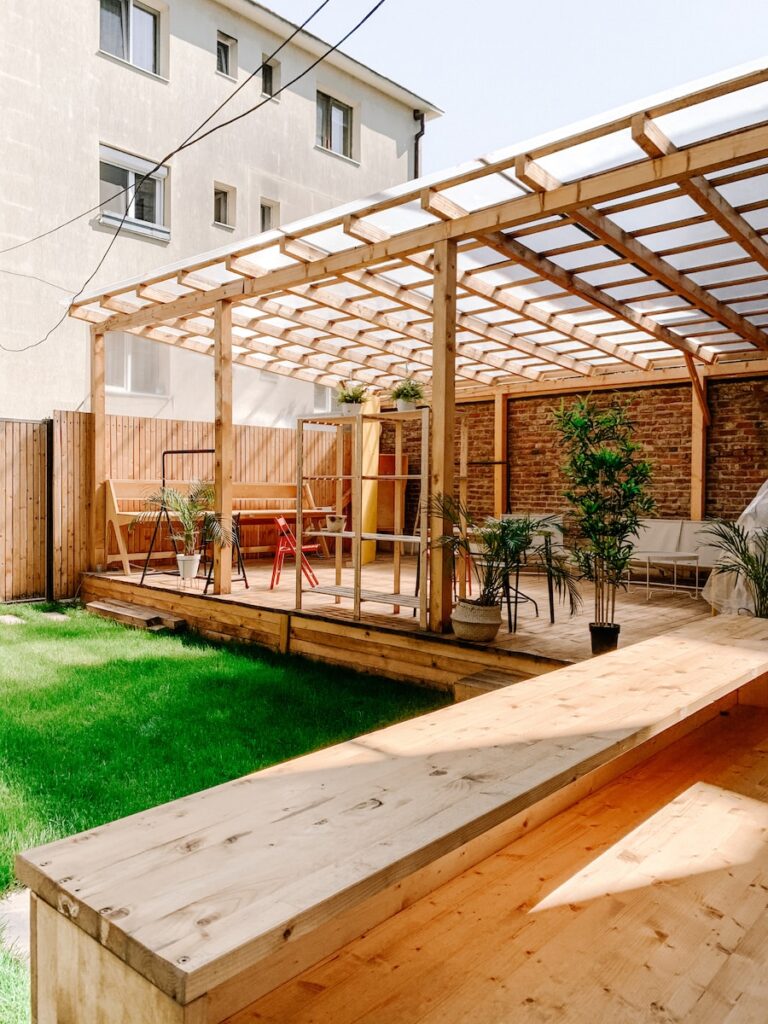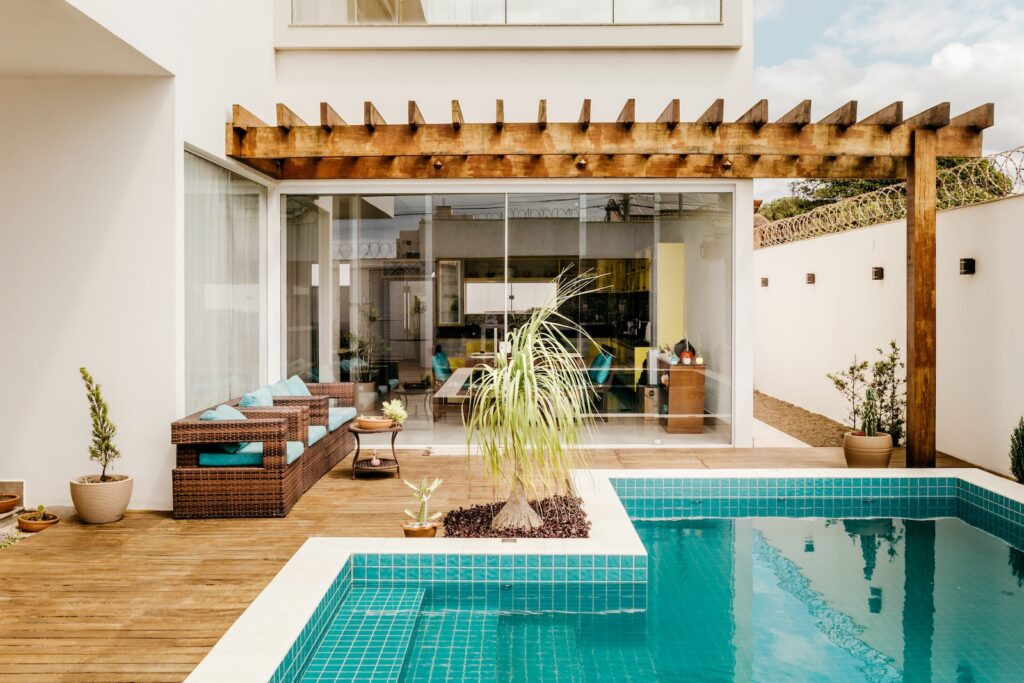Adding a pergola to your outdoor space can transform it into a charming and functional haven. A well-designed pergola provides shade, defines an outdoor living area, and enhances the overall aesthetic of your home. However, the success of this DIY project hinges on a precise and error-free installation. To ensure your pergola stands tall and proud, there are five common mistakes to avoid.

Neglecting Proper Site Preparation
One of the most critical aspects of pergola installation is proper site preparation. Failing to adequately prepare the site can lead to a slew of issues down the road. After finding the right one to build at https://theluxurypergola.com/, start by leveling the ground where the pergola will stand. Use a level to ensure the ground is even and stable. If your site has slopes or uneven terrain, address these issues before proceeding. Neglecting this step can result in an unstable and unbalanced pergola that may not withstand the test of time. Additionally, consider factors such as underground utilities and local building codes when selecting the installation site.
Skipping Professional Consultation
While DIY projects are often a source of pride, certain tasks may benefit from professional consultation. Pergola installation falls into this category. Seeking advice from a professional contractor or an experienced individual in pergola construction can provide valuable insights. They can guide you in selecting the right materials, ensuring proper structural support, and navigating potential challenges. Skipping this step may lead to suboptimal material choices, inadequate structural integrity, or other complications that could have been avoided with professional guidance.

Ignoring Material Quality and Durability
Selecting the right materials is paramount to the longevity and aesthetic appeal of your pergola. Some common mistakes include opting for subpar wood that is prone to rot or choosing materials that aren’t weather-resistant. Ignoring the quality and durability of materials can result in premature deterioration, requiring frequent repairs or replacements. Prioritize materials that can withstand your local climate, resist insects, and endure the test of time. This investment in quality materials will pay off in terms of both longevity and overall satisfaction with your outdoor structure.
Overlooking Proper Anchoring and Support
Ensuring your pergola is securely anchored is crucial for its stability and safety. Many installation mistakes stem from overlooking proper anchoring and support. Whether attaching the pergola to an existing structure or installing it as a standalone feature, use sturdy anchors and braces. This is especially important if your region is prone to high winds or inclement weather. Inadequate anchoring can lead to structural instability, posing a safety hazard and potentially causing damage to your property.
Disregarding Local Building Codes
Every locality has specific building codes and regulations that must be adhered to when installing structures like pergolas. Disregarding local building codes can result in fines, forced removal of the pergola, or even legal complications. Before embarking on your installation project, contact your local building department to understand the relevant regulations. This includes considerations such as height restrictions, setback requirements, and any necessary permits. Complying with local building codes ensures that your pergola is not only aesthetically pleasing but also legal and safe.
A pergola can be a delightful addition to your outdoor space, providing a perfect blend of form and function. By steering clear of common installation mistakes such as neglecting proper site preparation, skipping professional consultation, ignoring material quality, overlooking anchoring and support, and disregarding local building codes, you pave the way for a successful and enduring project. Take the time to plan meticulously, seek expert advice when needed, and prioritize quality materials and construction practices. With these considerations in mind, your pergola installation can be a rewarding DIY endeavor that enhances your outdoor living experience for years to come.
